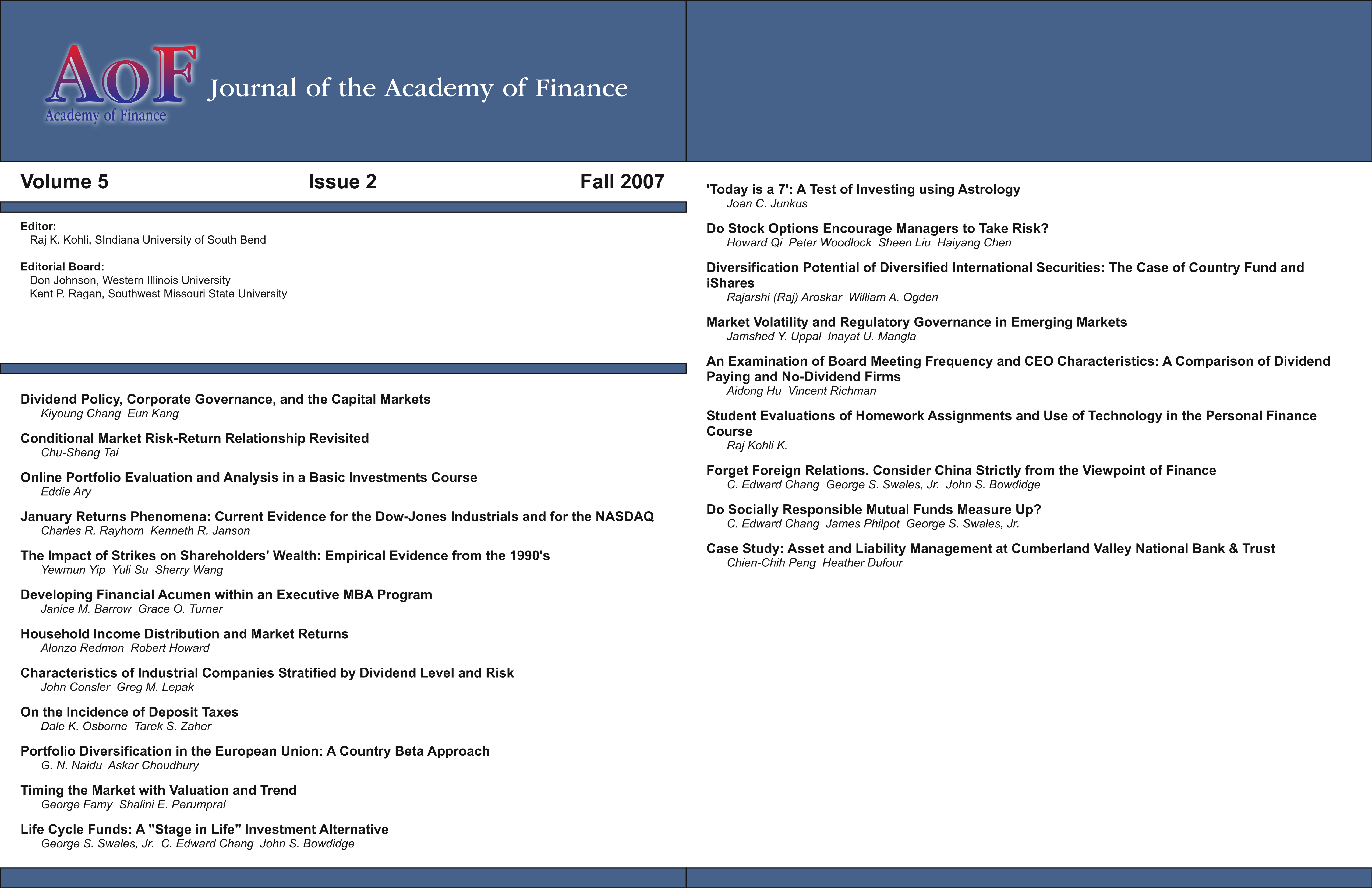Conditional Market Risk-Return Relationship Revisited
DOI:
https://doi.org/10.58886/jfi.v5i2.2608Abstract
This abstract was created post-production by the JFI Editorial Board.
The purpose of this paper is to reexamine the puzzling relationship between the expected market risk premium (MRP) and conditional market variance found in previous studies. Unlike these studies, this paper presents a new test which recognizes the impact of using realized MRP as a proxy for expected MRP. This test allows up and down-market volatility to have distinct impacts on the MRP. We show that the estimates of the single factor market risk-return relationship may be biased downwards due to the use of the realized MRP as a proxy for the expected MRP. Therefore, not accounting for states where the realized MRP is negative leads to an aggregation bias resulting from the compensation effects of the positive and the negative MRP. We find evidence of a positive (negative) and significant relationship between the MRP and conditional market variance in bull (bear) market context. This result is robust to whether the market volatility is proxied by the conditional variance generated from a GARCH(1,1) model or by the implied volatility index from Chicago Board Option's Exchange.





